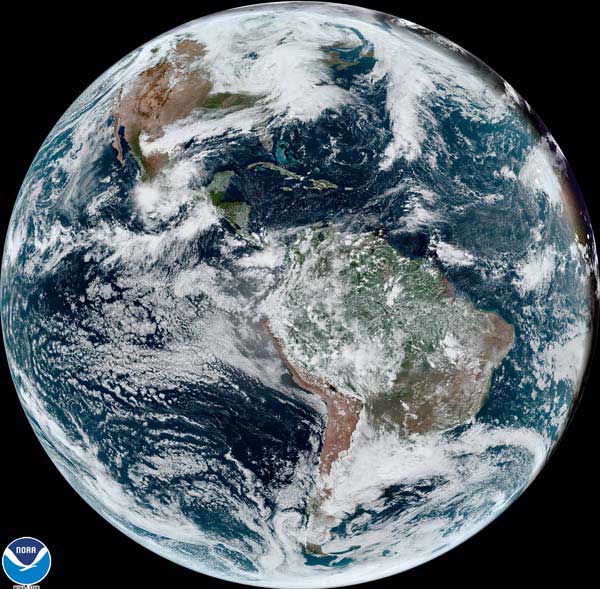
Putting Earth Observation into ‘the Market Perspective’ (Image Credit: SNN)
PARIS (ESA PR) — With a boom in the global market for Earth observation information and data products, participants at this year’s Φ-week conference have been digging deep into the ‘market perspective’. This important topic includes how to gain a better understanding of what governments, industry, the public and other users of Earth observation products and services need and expect to create value for society and the economy.
According to the latest report from the Geospatial Industry Outlook and Readiness Index, GeoBuiz, the Earth observation industry as a whole is estimated to have been worth almost US $58 billion in 2019, rising to almost US $76 billion in 2020. Moreover, it is thought that this steep rise merely marks the beginning of bigger things to come.
In addition, with respect to Europe industry, the 2021 survey published by the European Association of Remote Sensing Companies, EARSC, indicates that in 2020 there was a 24% growth in the number of companies associated with the Earth observation industry, as well as a 24% increase in revenue and a 17% rise in employees, compared to 2019.
Essentially, Earth observation satellite data made available through ESA and through Europe’s Copernicus programme are free and open to all. While this traditional approach of providing Earth observation data works extremely well for the scientific community and established users of data-based services, and support business creation in Europe, the rapidly growing commercial market for Earth observation products opens a myriad of opportunities – for the Earth observation industry, and for the protection of our planet.
During the session dedicated to the market perspective at Φ-week, Steve Bochinger from Euroconsult delivered an extremely positive view of the future Earth observation market with emerging new verticals, albeit not completely free from potential complications.
ESA’s Geraldine Naja showed how ESA, with its newly established Directorate of Commercialisation, Industry and Procurement, will take a new approach to supporting European industry, taking benefits from worldwide commercial and New Space opportunities.
During his talk, Marc Nolla Harvey, Director of Strategic Initiatives at SAP, said simply, “Earth observation benefits companies by allowing them to make more profit, be more efficient and be more sustainable.”
And, Raffaele Mauro, General Partner at Primo Space Fund, a venture investor organisation focused on the space business, explained the why private investors such as venture capitalists increasingly see the New Space economy as a very interesting investment target, which explains the current boom in private investment.
Environmental, social and governance, or ESG, criteria are also increasingly important to companies, their investors and other stakeholders. With growing concern about companies’ ethical and sustainability practices, Earth observation has a critical role to play.
While ESG certification picks up pace, the growth in Europe’s market for Earth observation is also closely linked the European Commissions’ Green Deal – which aims to transform the EU into a modern, resource-efficient and competitive economy, ensuring no net emissions of greenhouse gases by 2050. Businesses and industry in many sectors such as agriculture, energy, insurance, security, are clearly using Earth observation to help in their efforts to curb greenhouse emissions and adopt more sustainable and profitable practices.
This growth in the Earth observation market comes at a time when there are an increasing number of commercial companies developing small satellites relatively quickly and selling the resulting data products directly to their customers alongside space agencies such as ESA, which tend to take the ‘slow road’ developing satellite missions, which either prove new observing techniques, respond to gaps in scientific knowledge or deliver systematic data over many years.
Simonetta Cheli, ESA’s Head of the Earth Observation Strategy, Programme & Coordination Office, said, “The need for new ways for ESA to support the commercial Earth observation industry to develop innovative satellite missions, products and services remains more important than ever, particularly with respect to growing market demands and to monitoring and managing the impacts of climate change. We are adopting the concept of New Space to explore different ways of bringing benefits to the commercial world, and ultimately help building a stronger and leading European EO economy.”
Giuseppe Borghi, Head of ESA’s of ɸ-lab Division, added, “Sessions at this year’s Φ-week are certainly sparking some interesting and lively discussions. We are hearing a lot about the needs of different sectors such as the agriculture, energy, re/insurance, security and private investors and how ESA can support the growth of a flourishing ecosystem. Commercialisation is one of the priorities in ESA’s Agenda 2025 and we, as ESA, have to work together with the market, the Earth observation industry and private investors to ensure that everyone can benefit from the wealth of information we get from space.
“We can do this in a number of ways. We are working hard to tap into disruptive technologies and business models, including quantum computing, machine learning and, in general, artificial intelligence, the internet of things and cloud computing in space. We are making transformative innovation funding available through challenges as announced by the ESA Director General during the Φ-week opening session. A key instrument is also our commercialisation co-funding programme InCubed, backed by support from our Member States and the partnerships we build with leading research centres, industry and private investors.”
While Φ-week continues and ‘the market perspective’ becomes clearer, there are already other moves towards blending traditional Earth observation with business initiatives. For example, ESA has just signed a contract with ICEYE, a commercial provider of satellite radar imagery, to include their constellation of small satellites in the fleet of missions contributing to Europe’s Copernicus environmental monitoring programme – a perfect example of New Space.
This week has also seen the signing of a contract with the German Research Center for Artificial Intelligence to support a new development initiative focused on artificial intelligence for Earth Observation.
– Advertisement –








